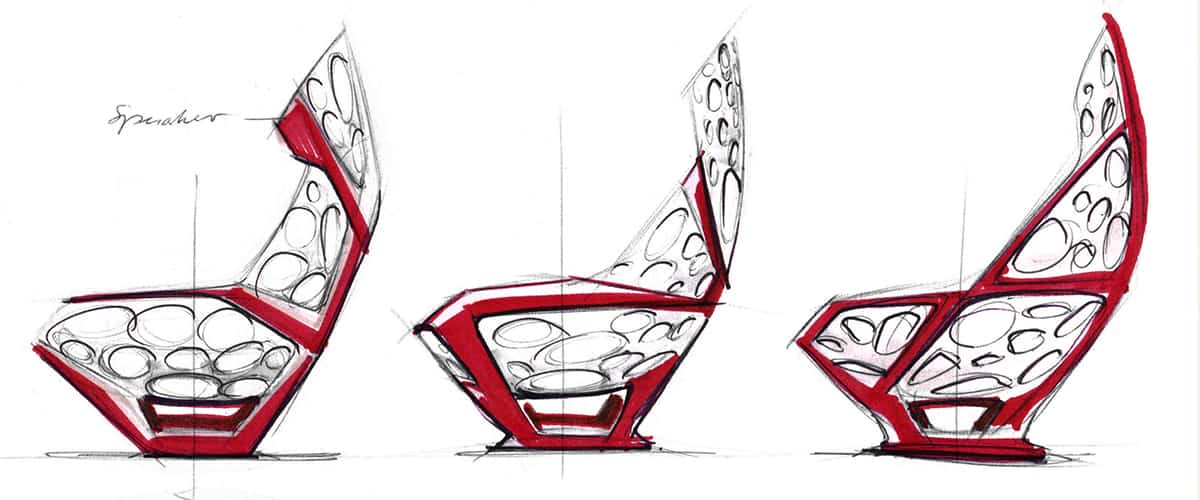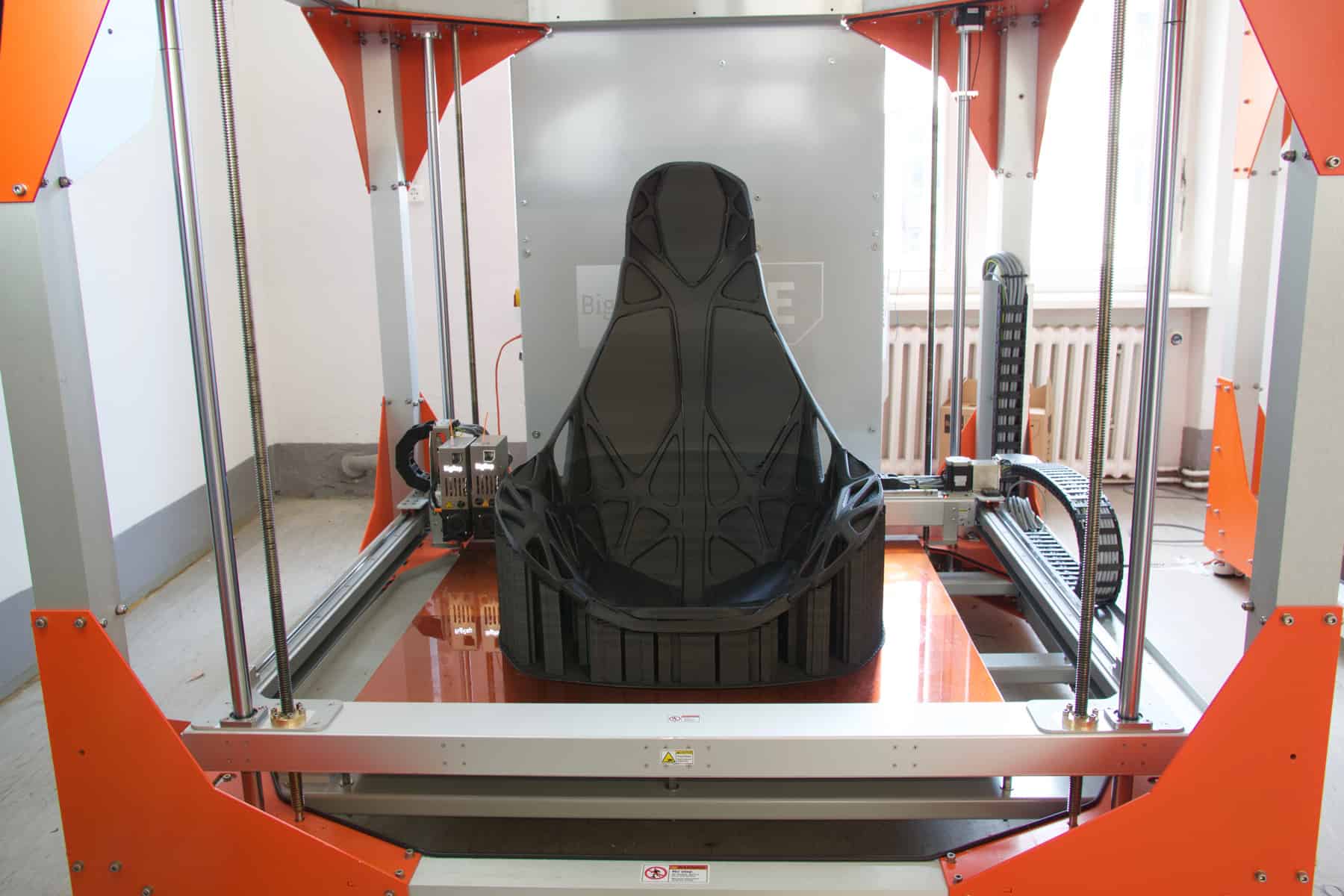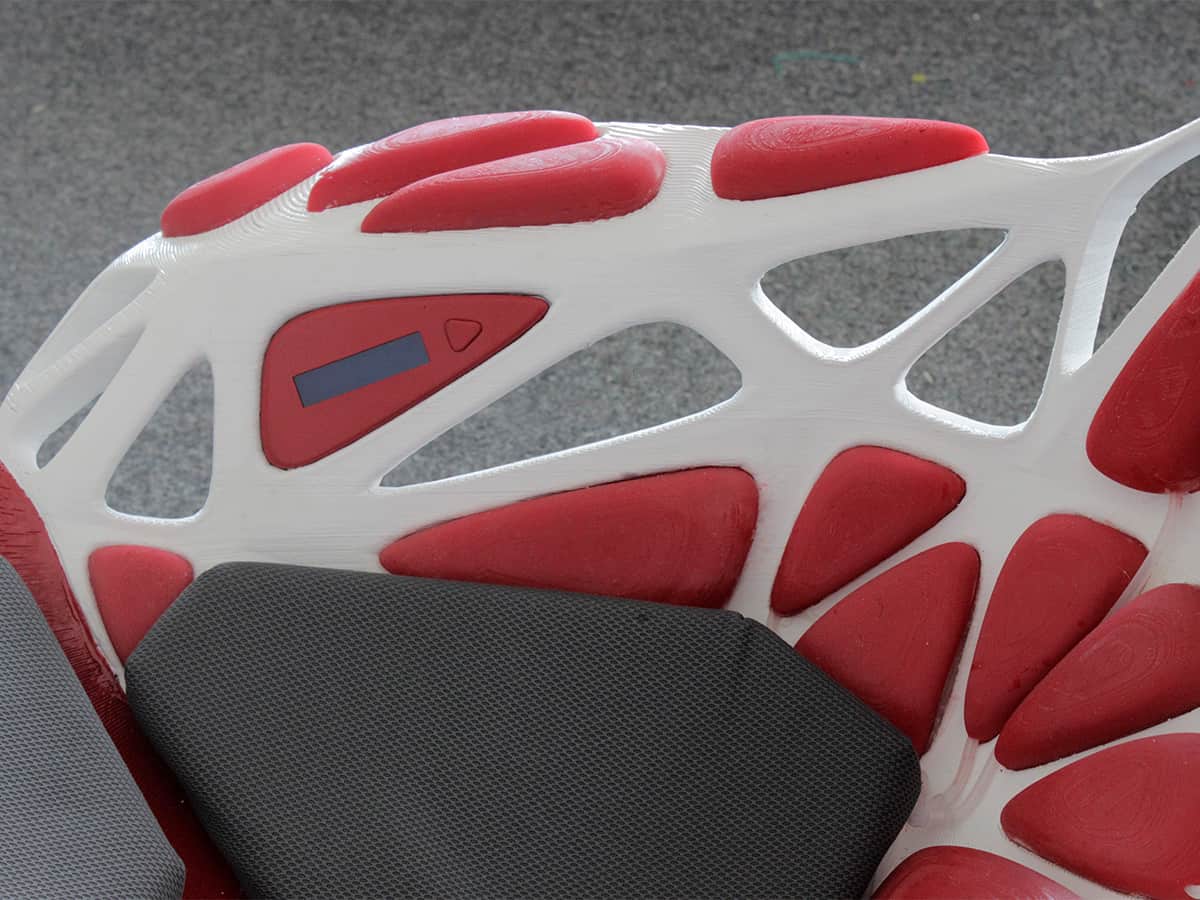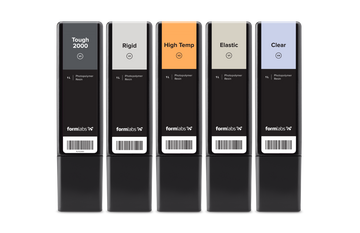Responsive car seat enabled by large-format 3D printing showcases innovation potential for additive manufacturing in the automotive space.
While the focus is often on engine power and exterior design when talking about cars, there is another automotive feature ripe for innovation. The car seat, which functions as the interface between driver and vehicle, is one of the most important elements of a car and must offer ergonomic support, safety features, and comfort.
In recent years, there has been a growing focus on how to reinvent and improve automotive seating using new design concepts and advanced manufacturing, such as 3D printing. One such project, entitled “Concept Breathe”, was the result of a collaboration between students at the Braunschweig University of Art, German automotive manufacturer Audi, and large-format 3D printing specialist BigRep.
A Multi-Partner Effort
Concept Breathe, which culminated in the creation of a full-sized “breathable” car seat, was born out of an exploration into the car of the future. The Braunschweig design students, under the supervision of Dr. Manuel Kretzer, a professor of Material and Technology, and Audi’s development/innovation unit led by Mike Herbig, were inspired by the idea that the car of the future could have a greater connection to the driver. As they say: “What if it were to become a partner that reacts and responds to our actions, an organism, a friend, that lives and breathes?”
Interestingly, Audi had already started pursuing this idea with the development of Klara, a “sensitive Audi A1” in 2017. This concept study aimed to foster greater empathy between automobile and driver by creating a sensitive car that appears to breathe. The breathing effect was the result of 39 electric motors installed under the car’s metalwork and several sensors that would enable Klara to take breaths and react to its surroundings.
The Concept Breathe car seat project, undertaken in the spring of 2017, was an extension of the experimental Klara initiative that sought to combine different technologies and design principles to create a more human car seat that could dynamically move along with the driver.
“What if the seat were to become a partner that reacts and responds to our actions, an organism, a friend, that lives and breathes?”

Conceiving of ‘Concept Breathe’
The seating project was spearheaded by a group of 10 bachelor students at the Braunschweig University of Art as part of their Digital Crafting module. The courses in this module are specifically aimed at developing “an experimental understanding of emerging design opportunities” by leveraging innovative algorithmic and parametric design principles, as well as digital manufacturing technologies, such as 3D printing, which bring design concepts to life.
Ultimately, the car seat’s design was inspired by organic shapes and systems and consisted of several active components integrated into a lightweight frame. Due to the final design’s complex geometry—which was the result of several parametrically designed iterations—the student team and their partners decided to 3D print the 1:1 seat prototype. BigRep, known for its large-scale 3D printers, was more than up to the task.
The seat structure was 3D printed using the BigRep ONE machine, which has a large build volume of up to one cubic meter, and BigRep’s PRO HT filament, an easy-to-print biopolymer with enhanced temperature resistance compared to traditional PLA. The printing process took nearly 10 days to complete, which at the time marked BigRep’s longest print.
Onto the 3D printed frame were attached 38 customized active components, which created a haptic and visual breathing effect, along with a range of specially designed cushions made from a high-performance textile for optimized comfort and support. As the design team put it: the active components (seen in red) “are designed to increase the seat's ability to respond to changing driving conditions but especially to enhance the user's identification with the animate object through motions of breathing.”

Paving the Way for Innovation
BigRep’s 3D printing technology was vital to the realization of the project. Not only was the company’s large-format 3D printer equipped to handle the scale of the full-sized car seat structure (reducing the need for post-printing assembly), it was also able to reproduce the product’s complex organic shape. Moreover, 3D printing offered the project partners a cost-accessible way to directly create a large prototype without having to invest in tooling or turn to complex supply chains.
In the same way that large-format 3D printing was critical to bringing this concept design to life, the technology is now being used across the automotive industry to explore new design ideas and bring new innovative solutions to market, from rapid prototypes to end-use parts. In automotive seating applications in particular, there have been a number of projects that leverage the technology’s ability to create complex designs optimized for performance and comfort, as well as customized products at scale.
Similarly, German automaker Porsche recently launched a 3D printed bodyform full-bucket seat that integrates customizable 3D printed lattices for superior support and breathability. Much like Concept Breathe, the 3D printed seat emphasizes the human and technology connection to generate an enhanced driving experience, particularly for high-performance vehicles.

3D Printing is the Future of Automotive
Ultimately, the Concept Breathe project would not have been possible without additive manufacturing, particularly BigRep’s large-format 3D printing. The technology proved to be essential for rapidly and cost-effectively bringing an innovative idea to life.
For the broader automotive industry, the ability to 3D print large structures and products in a single piece has huge benefits. For one, it allows for design consolidation, allowing for large structures to be printed in one go, minimizing assembly and post-processing times. This has significant time and cost impacts whether users are printing a design concept, a functional prototype, or an end-use part.
The technology also enables product designers to create previously impossible designs, opening up limitless opportunities for innovation. With it, forward-thinking individuals and teams (such as the Braunschweig design students and their partners at Audi and BigRep) can really dive into new ideas and transform them into something real, something that can shape the future.
To learn more about how 3D printing helped bring the Concept Breathe article to life, check out the following video and the original coverage of the project.
Interested in how the BigRep ONE can unlock your innovation? Learn more about large-scale printing here.







